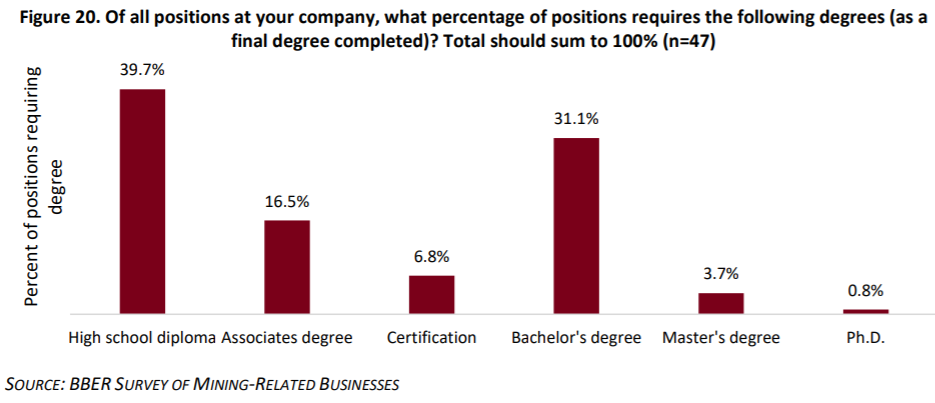Study: Mining Supported 11,600 Minnesota Jobs in 2019
A newly released study from the University of Minnesota Duluth (UMD) has found that mining supported 11,600 jobs throughout the state of Minnesota in 2019. These jobs come from direct jobs in the mining industry, indirect jobs, which are jobs in industries that provide supplies and services to the mining industry, like supplying radiators and enormous tires for mining equipment, and induced jobs, which are created when miners spend their paychecks in the local economy at hospitals, grocery stores and auto dealerships.
According to the study, most of the mining jobs in Minnesota come from the iron ore industry, which should not surprise anyone. As we detailed in the article “Economic Energy,” in Thinking Minnesota, the iron mining industry is the backbone of Northeastern Minnesota’s economy. The high wages paid by the mining industry is one reason why residents of the region are excited about the economic opportunities copper-nickel mining would bring to the region.
An interesting finding in the study is that the mining industry provides great jobs for people without a college degree. In fact, nearly 40 percent of all the jobs that were supported by the mining industry were held by people with only a high school diploma, 16.5 percent had associates degrees, 31 percent had college degrees, 2.7 percent had master’s degrees, and less than 1 percent had a Ph.D.

Creating high-paying, family supporting jobs for people with high school educations is the major benefit to having a strong manufacturing economy. It is these types of jobs, not low-paying tourism jobs, that have traditionally allowed people to buy a house, raise their families, and have their own slice of the American Dream.
The study also found that building a copper nickel mine in Minnesota would have a huge impact on construction employment, creating more than 12,000 jobs, $815
million in labor income, $776 million in value added spending, and $1.5 billion in total output to the state of Minnesota.
It is important to note that Center of the American Experiment’s estimated jobs numbers for copper, nickel, cobalt, and titanium mining in Minnesota did not include construction jobs because we wanted to show the long-term impact of the industry to the state’s economy. Using this methodology, our updated estimates indicate that mining Minnesota’s world-class copper nickel resources would support approximately 14,850 jobs in Minnesota, as you can see in the table below.

The Eagle Mine in Michigan and the Flambeau Mine in Wisconsin, as well as mining in several Canadian operations, show that it is possible to mine for copper and nickel in an environmentally responsible way, even in water-rich environments. However, despite this recent track record of success, the Minnesota DFL has formally adopted a resolution calling for a moratorium banning copper-nickel mining projects in Minnesota.
The resolution clearly shows that real life examples of successful mining won’t be enough to satisfy elected officials who care more about catering to the anti-mining biases of urban liberals than to the needs of hardworking Minnesotans who simply want high-paying mining jobs to put food on their tables.
The UMB study shows that Minnesotans have a lot to gain from mining, but it also shows they have much to lose if it goes away.